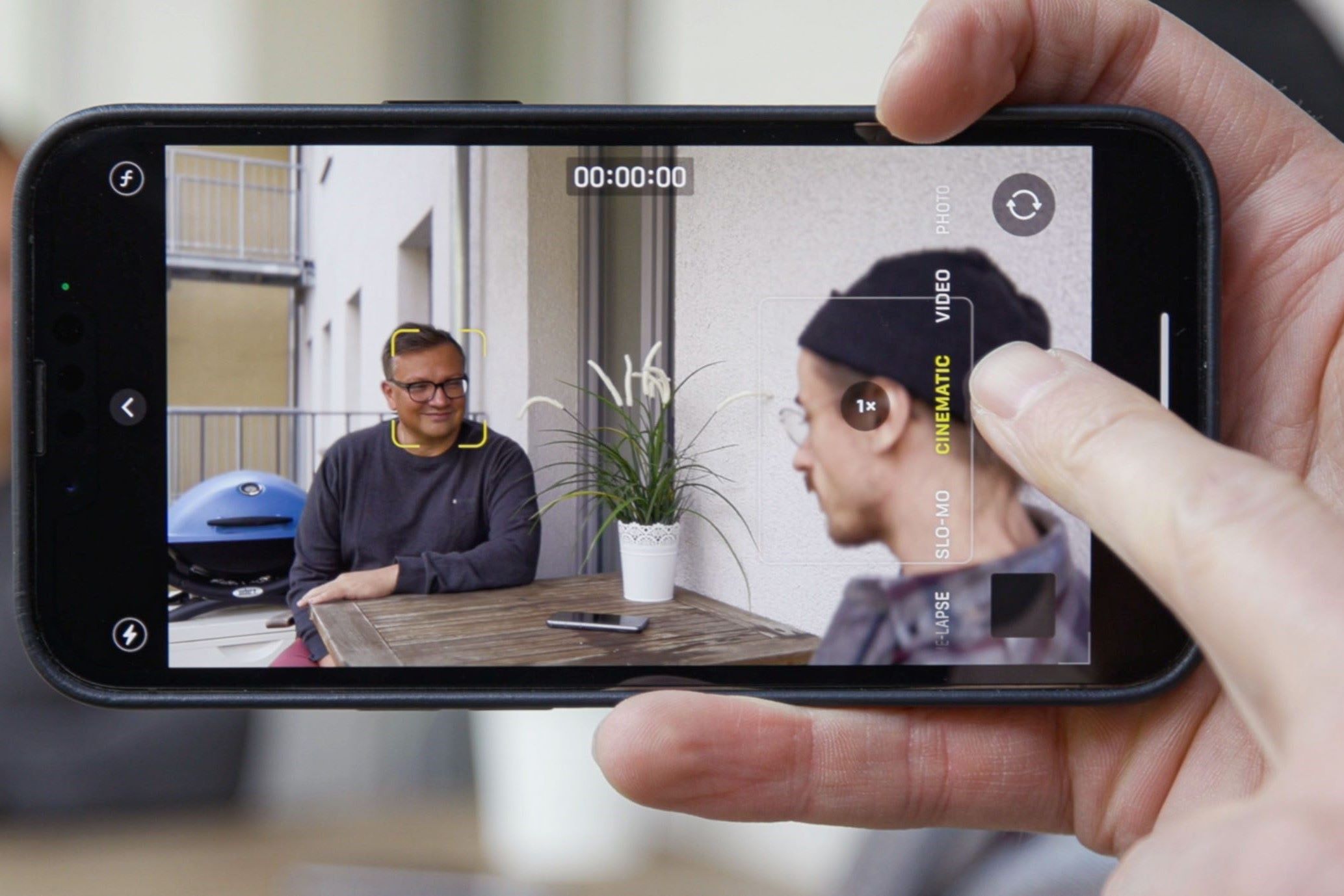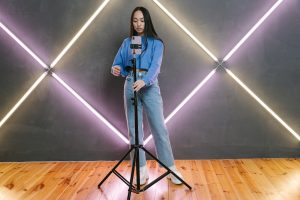What is Background Blur?
Background blur, also known as bokeh, refers to the aesthetic quality of the out-of-focus areas in a photograph. This effect is achieved by using a shallow depth of field, where the subject is in sharp focus while the background appears soft and blurred. Background blur can significantly enhance the visual impact of a photo by isolating the subject and creating a sense of depth and dimension.
The primary purpose of background blur is to draw attention to the main subject, whether it's a person, object, or a specific element within the frame. By reducing the clarity of the background, the viewer's focus is naturally directed towards the subject, resulting in a more visually compelling image.
In photography, background blur is often used to create a sense of separation between the subject and the surroundings, especially in portrait, macro, and close-up photography. It can also be employed to eliminate distracting elements in the background, allowing the subject to stand out more prominently.
The aesthetic appeal of background blur lies in its ability to add a sense of artistry and visual interest to a photograph. The soft, dreamy background can evoke a feeling of intimacy and draw the viewer's attention to the details and emotions captured in the main subject.
With the advancement of smartphone camera technology, achieving background blur effects has become more accessible to a wider audience. The introduction of features like Portrait Mode on the iPhone 13 has empowered users to effortlessly capture professional-looking photos with stunning background blur, previously achievable only with high-end DSLR cameras and specialized lenses.
Understanding the significance of background blur in photography can inspire individuals to explore creative ways of using this technique to elevate the visual impact of their photos. Whether it's capturing memorable moments or showcasing the beauty of everyday scenes, background blur adds a touch of artistry and sophistication to the art of photography.
How to Enable Portrait Mode on iPhone 13
Portrait Mode is a powerful feature on the iPhone 13 that allows users to effortlessly capture stunning photos with captivating background blur. This innovative functionality leverages advanced computational photography to simulate the depth-of-field effect typically achieved with professional cameras and lenses. By enabling Portrait Mode, users can elevate their photography game and produce visually striking images with beautifully blurred backgrounds.
To enable Portrait Mode on your iPhone 13, follow these simple steps:
-
Open the Camera App: Begin by launching the Camera app on your iPhone 13. This can be done by tapping the camera icon on the home screen or swiping to access the camera from the lock screen.
-
Select Portrait Mode: Once the Camera app is open, swipe left or right on the camera modes at the bottom of the screen until you reach "Portrait." This mode is represented by an icon featuring a person's silhouette.
-
Frame Your Shot: With Portrait Mode activated, frame your subject within the viewfinder. The iPhone 13's advanced depth-sensing technology will analyze the scene and identify the subject, preparing to apply the background blur effect.
-
Adjust the Depth Control (Optional): For additional creative control, consider adjusting the depth control slider that appears at the bottom of the screen. This feature allows you to fine-tune the intensity of the background blur, enabling you to achieve the desired aesthetic effect.
-
Capture Your Photo: Once you have composed your shot and are satisfied with the framing, simply press the shutter button to capture the photo. The iPhone 13 will utilize its computational photography capabilities to create a stunning image with a beautifully blurred background, showcasing the main subject with remarkable clarity.
Enabling Portrait Mode on the iPhone 13 empowers users to effortlessly capture professional-quality portraits and visually compelling photos with ease. The seamless integration of advanced technology and user-friendly design makes it accessible to photographers of all levels, allowing them to explore the creative possibilities of background blur and depth-of-field effects.
By following these straightforward steps, iPhone 13 users can harness the power of Portrait Mode to elevate their photography, capturing memorable moments with a touch of artistry and sophistication. Whether it's a portrait, a close-up shot, or a captivating scene, enabling Portrait Mode on the iPhone 13 opens up a world of creative opportunities, enabling users to produce visually stunning images that stand out with captivating background blur.
Adjusting the Background Blur Effect
Once Portrait Mode is activated on the iPhone 13 and the subject is framed within the viewfinder, users have the option to adjust the intensity of the background blur effect, allowing for greater creative control over the final image. This feature, known as depth control, enables photographers to customize the level of background blur to achieve their desired aesthetic outcome.
Upon selecting Portrait Mode and framing the subject, users can access the depth control slider that appears at the bottom of the screen. By interacting with this intuitive interface, photographers can seamlessly adjust the depth-of-field effect in real time, previewing the changes to the background blur as they occur. This interactive and user-friendly approach empowers individuals to fine-tune the visual impact of their photos, ensuring that the background blur complements the subject and enhances the overall composition.
The depth control slider on the iPhone 13 offers a range of adjustment options, allowing users to modulate the intensity of the background blur from subtle to pronounced. This flexibility enables photographers to adapt the effect to suit different scenes, subjects, and creative preferences, resulting in images that resonate with their artistic vision.
By manipulating the depth control slider, photographers can achieve various visual outcomes. For instance, when capturing a portrait, a more pronounced background blur can effectively isolate the subject, drawing attention to their features and expressions. On the other hand, for environmental portraits or scenes where context is essential, a more subtle background blur may be preferred to maintain a sense of place and atmosphere.
Furthermore, the ability to adjust the background blur effect directly on the iPhone 13 empowers photographers to experiment with different levels of depth-of-field, fostering a dynamic and exploratory approach to image creation. This hands-on experience encourages users to actively engage with the visual elements of their photos, honing their artistic sensibilities and developing a deeper understanding of the interplay between subject and background.
Ultimately, the capability to adjust the background blur effect on the iPhone 13 exemplifies the seamless integration of advanced technology and user-centric design, democratizing the art of photography and enabling individuals to express their creativity with unparalleled convenience. This intuitive feature not only enhances the visual appeal of photos but also fosters a sense of empowerment and artistic fulfillment, as users harness the power of depth control to craft images that resonate with their unique perspective and creative vision.
Tips for Achieving the Best Background Blur
Achieving the best background blur in your photos involves a combination of technical understanding and creative finesse. Here are some valuable tips to help you elevate your photography and capture stunning images with captivating background blur:
-
Optimize Lighting: Adequate lighting is crucial for achieving optimal background blur. When shooting in well-lit conditions, the camera can use faster shutter speeds and lower apertures, resulting in a more pronounced depth-of-field effect. Natural light, particularly during the golden hour, can enhance the overall visual impact of the photo and contribute to a more pleasing background blur.
-
Consider Distance: The distance between the subject and the background plays a significant role in determining the quality of the background blur. By positioning the subject a sufficient distance away from the background, you can create a more pronounced separation, leading to a smoother and more aesthetically pleasing blur.
-
Select the Right Lens: If you're using a DSLR or mirrorless camera, choosing the appropriate lens can greatly influence the background blur. Prime lenses with wide apertures, such as f/1.8 or f/1.4, are renowned for their ability to produce creamy, dreamy backgrounds, making them ideal for achieving stunning bokeh effects.
-
Understand Aperture: The aperture setting directly impacts the depth of field and background blur in a photograph. A lower f-stop number (e.g., f/2.8 or lower) results in a shallower depth of field, producing more pronounced background blur. Experimenting with different aperture settings allows you to control the aesthetic qualities of the background blur and tailor it to suit your creative vision.
-
Mind the Background: Pay attention to the elements in the background when composing your shot. Look for clean, uncluttered backgrounds that complement the subject and contribute to a more visually appealing blur. Avoid distracting or busy backgrounds that may detract from the overall impact of the image.
-
Utilize Portrait Mode: If you're using a smartphone with Portrait Mode capabilities, such as the iPhone 13, take advantage of this feature to effortlessly achieve professional-looking background blur. Portrait Mode leverages advanced algorithms to create a naturalistic bokeh effect, allowing you to focus on framing the shot while the camera handles the background blur.
-
Experiment with Composition: Explore different angles and compositions to maximize the impact of the background blur. Consider incorporating foreground elements to add depth to the image, further accentuating the sense of separation between the subject and the background.
By implementing these tips and techniques, you can elevate your photography skills and consistently produce images with captivating background blur, adding a touch of artistry and visual allure to your photos.
Editing Background Blur After Taking the Photo
In the realm of photography, the ability to refine and enhance the background blur after capturing a photo opens up a realm of creative possibilities. While the traditional approach involves achieving the desired background blur effect at the time of capture, advancements in technology have introduced post-capture editing tools that allow photographers to further customize the depth-of-field and bokeh effects in their images.
With the advent of sophisticated photo editing software and apps, photographers can now fine-tune the background blur of their images with precision and flexibility. One notable example is the availability of specialized editing features in applications like Adobe Photoshop, Lightroom, and various mobile editing apps, which offer dedicated tools for adjusting the depth-of-field and enhancing the bokeh effect.
These editing tools typically enable users to selectively apply blur to specific areas of the image, effectively simulating the natural depth-of-field characteristics that are traditionally achieved through the use of wide-aperture lenses. By leveraging these tools, photographers can isolate the subject and create a more pronounced background blur, thereby drawing attention to the main focal point and enhancing the overall visual impact of the photo.
Moreover, the emergence of AI-powered editing solutions has further revolutionized the post-capture manipulation of background blur. These intelligent algorithms can analyze the image and intelligently differentiate between the subject and the background, allowing for precise adjustments to the depth-of-field effect without compromising the image quality. As a result, photographers can seamlessly refine the background blur to achieve their desired aesthetic outcome, whether it involves enhancing the bokeh for a more artistic rendition or subtly softening the background to accentuate the subject.
For smartphone photographers, the ability to edit background blur after taking the photo is exemplified by the advanced capabilities of devices such as the iPhone 13. With the introduction of features like "Portrait Lighting" and "Depth Control," users can effortlessly adjust the background blur and depth-of-field effects directly within the Photos app, offering a seamless and intuitive editing experience that empowers photographers to refine their images with ease.
By embracing the potential of post-capture background blur editing, photographers can elevate their creative expression and refine the visual narrative of their photos. This capability not only enhances the artistic control and flexibility in image creation but also underscores the transformative impact of technology in democratizing the art of photography, enabling individuals to craft compelling and visually captivating images that resonate with their unique vision and storytelling.


